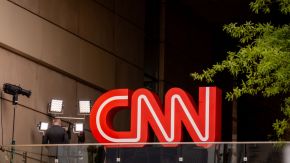After the slowest year for U.S. bank mergers in three decades, investment bankers are seeing flickers of a recovery.
It is not that deals are flourishing. The number of announced transactions in January and February was down 17 percent from a year earlier, and transaction value was off 60 percent, according to Thomson Reuters.
A slight improvement in credit quality and earnings, however, is spawning hope that mergers may soon seem a palatable route to profitability for buyers and sellers.
"Consolidation has to happen as a way of driving better shareholder returns in the banking industry," said KBW Inc Chief Executive Officer Thomas Michaud. "It could be the acquirers looking to take expenses out of the target. It could be the sellers thinking that their shareholders are better off joining a bigger company with a broader platform."
Michaud made his comments after KBW, which specializes in advising small and mid-sized banks on mergers and capital-raising, reported a 2011 operating loss of $22.4 million, in part because of a dearth of deals.
A willingness to buy and sell banks would not only warm the wallets of investment bankers and consultants but also send an important message of confidence from financial companies that loan demand and the U.S. economy are expanding.
"There are underlying pressures to do acquisitions," said Arthur Loomis, president of Northeast Capital & Advisory in Albany, New York. "We could easily see half of today's banks disappear once buyers get the confidence to be acquisitive again."
There are about 7,500 U.S. banks today, but only 168 U.S. merger and acquisitions were announced last year. Loomis said people may scoff at his merger forecast, but noted that between 1991 and 2000, 3,996 banks and thrifts were merged or acquired.
Believers in the consolidation story say eight straight quarters of improving credit quality are giving potential buyers confidence that they can trust the valuation of loan portfolios at target banks.
The rise of bank stocks this year also is giving psychological support to bank directors who blanched at getting out at the bottom of the market and to potential buyers worried about saddling shareholders with dilutive stock, Michaud told Reuters.
The KBW Bank Index of 23 large and midcap U.S. stocks is up about 14 percent this year, compared with an 8 percent rise in the Standard and Poor's 500 index.
Investors are finally trading shares of banks based on their expected earnings rather than on what their assets would be worth in bankruptcy, said William Hickey, co-head of investment banking at KBW competitor Sandler O'Neill & Partners. He said he expected heightened shareholder questions on the subject of profitability during the upcoming annual meeting season.
RATES AND REGULATION
Rising regulatory costs and falling revenue from low interest rates remain the biggest reasons that many banks are realizing they cannot go it alone, bankers say.
The rock-bottom rates, which the Federal Reserve has said will continue through the end of 2014, have severely strained banks' net interest margin, the difference between what they pay for deposits and reap from loans and investments.
The expense-revenue disconnect is especially acute at banks with less than $5 billion of assets, ranging from small regionals to credit unions.
"Many community banks, even if they are clean with strong capital, are trading at 75 percent of tangible book value because of skepticism as to whether they will ever get their profits above their costs of equity," said John Chrin, former co-head of financial institutions mergers and acquisitions at JPMorgan Chase & Co. "The fundamental macro issues continue to pressure institutions to think about their alternatives."
A typical return on assets of 1 percent at these banks cannot match their burgeoning costs, said Northeast Capital & Advisory's Loomis.
"If I'm the president of a bank looking at that equation I'd hit the exits," he said. "I'd pull the ripcord."
It remains hard, nevertheless, to find bankers who are ready to jump, he conceded. Uncertainty about the economic recovery, the fractious political climate, doubts about new tax structures and the possibility that the stock market could reverse at any moment continue to stymie activity.
"Everyone's talking about activity, but it's still soft," said Eric Luse, a partner at Washington law firm Luse Gorman Pomerenk & Schick.
Another sign of the hard times: Not a single new bank was chartered in 2011, according to the Federal Deposit Insurance Corp. It's a telling indicator of the outlook for banking that venture capitalists and other "smart money" avoided the sector, several analysts said.
Resource: Reuters
TOO BIG TO DEAL
Sandler O'Neill's Hickey said he expected the deal drought to linger. "It is going to take some time, probably a little longer than everyone anticipated," he said.
The Dodd-Frank reforms of 2010 also are curbing the urge to grow. Smaller banks resist crossing the $10 billion asset barrier because it restricts the fees they can collect from merchants for processing debit card transactions. Larger banks are reluctant to breach the $50 billion limit, which requires them to undergo annual stress tests and other close regulation from the Federal Reserve.
Some bankers, nevertheless, say they are ready to deal.
New York Community Bancorp Inc CEO Joseph Ficalora said he could see his $42 billion-asset company reach $60 billion over the next few years through one or two acquisitions.
"We have the balance sheet and the intellectual capacity to make large deals work for us," he said.
Acquisitions that do occur, however, won't match the megadeals of past decades, such as Chase Manhattan Corp's $28.6 billion takeover of J.P. Morgan & Co in 2000.
The largest banks -- JPMorgan Chase, Bank of America Corp , Citigroup Inc and Wells Fargo & Co -- are bumping against limits on controlling more than 10 percent of U.S. deposits, and several are under pressure to raise regulatory capital rather than expand.
The next-largest 25 banks, however, will be looking for bargains and opportunities to build market share, said Toos Daruvala, a senior partner at McKinsey & Co and former head of its Americas banking practice.
"I'd be surprised if we didn't see some big failures over the next three years and much more M&A," he said.
Aside from small-bank mergers, several consultants said they expected strong regional banks such as PNC Financial Services Group and US Bancorp to continue filling out their franchises with acquisitions. Spokesmen at those companies did not return calls for comment.
KBW's Michaud said the dream event would be a merger of two mid-sized or larger regionals that "will get everybody's attention" and create a spurt of activity.
Even his deal expectations are tentative, however.
"It should pick up as the year plays out," he said, "as long as the economy hangs in there."















